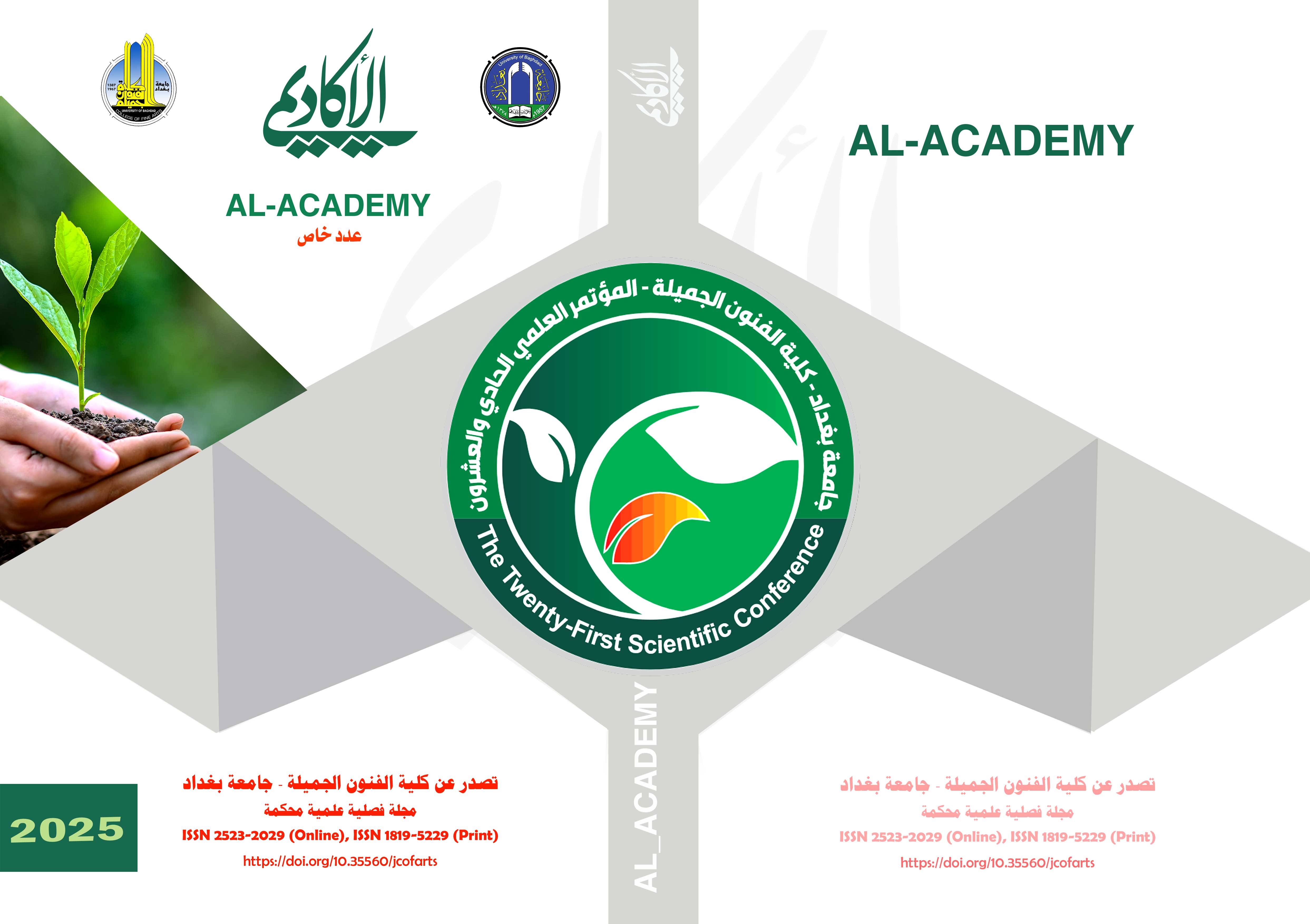Ecological simulation of interior spaces (extreme "desert" environments as a model)
DOI:
https://doi.org/10.35560/jcofarts1586Keywords:
Natural environment, American ceramics, potter (Dylan Beck)Abstract
The concept has developed on the basis of the environment becoming a major system based on the idea of mutual benefit between design and increasing its quality on the one hand, and improving the relationship with the site environment on the other hand, so it is interested in exploring nature and absorbing its absolute existence, and then addressing it in the design, giving the design within : What are ecosystems in interior design and what are their treatments in the extreme desert environment The aim of the research was to reveal the elements of achieving ecological design and integrating it with the extreme desert environment, and the research included two researches, the first: design simulation of ecological extreme environments (desert) and the second: simulation of nature in sustainable desert resorts the researchers adopted the descriptive approach case study to achieve the study objective and the selection of the research community:
1-the situation was characterized by the effectiveness of responding to calls for a return to the natural system and it was to benefit from it environmentally, including the optimal investment for the kindness of a harmonious design place based on the location surrounding them geographically and historically
2-the case contributed to the effective presence of nature simulation for the technique of dealing with materials and methods of finishing them and in the use of techniques and science in effective ways to produce deep sustainable design.
The most important conclusions
1-that ecology in the designs of the nature system is an integral and important part of life and not just an imaginary addition.
2-the connection of the design of the natural system with scientific theses between metaphor and shorthand from traditional designs leads to the existence of another design orientation that did not exist provided that the connection with the ocean was not severed, which led to a growing sense of belonging and continuity.
Keywords: simulation, ecology ,interior space, extreme environments
References
Python , R. (2006). The strategy of simulating nature and architectural form in sustainable architecture. Baghdad:: University of technology. Department of architectural engineering.
Johnson, D. (1997). Meaning of Environmental Terms. Journal of Environment Quality 26 (3).
Al-Obeidi, F. G. (2004). Integralism in Interior Architecture /. Master thesis. Baghdad:: University of technology, architectural department.
Brian, E. (2005). Rough Guide to Sustainability. 2nd Eition. UK: RIBA Enterprises Ltd.
Cole, R. (1995). Linking and Prioritizing Environmental Criteria Proceedings. ,Toronto, Canada: Task Group 8.
Evans., M. (1998). Housing climate and comfort. London.
Givoni, B. (1994). Passive and Low-Energy Cooling of Building. New York: Van Nostrand Reinhold.
https://www.merriam-webster.com/dictionary/ecology. (n.d.).
Ismail, G. M. (2015). The system of green architecture in sustainable environmental design. Baghdad: : Faculty of architecture. University of Baghdad.
Miller, R. (1996). nterregional Feed Back Effects in Input-Output Models.
Nicholls, R. (2002). Low Energy Design. UK: Oldham.
Riyadh., G. A. (2004). Reference in the facilitation, design and construction of modern housing. Saudi Arabia:: the development of the city of Riyadh.
rrier, T. (2018). Evolutionary Ecology of Marine Invertebrate Larvae. Oxford University Press.
saleha.madynea. (2006). The simulation between philosophy and poetry. Algeria: master's Thesis, .University of Tlemcen.
Stumler., J. (1978). Art criticism. Beiru: Arab publishing Foundation.
terms, U. D. (1993). سلسلة المعاجم. Tunisia: Arabization Coordination Office.
Yeang, K. (1999). "The Green Skyscraper Basis for Designing Sustainable Intensive Buildings. Prestel.














